2014 CAA Conference Student Summaries
Summaries:
1. Auditory Processing Disorders in Children
Speaker: David Moore PhD University of Cincinnati, Cincinnati, OH
2. Avoiding Commoditization of Audiology in the Hearing Aid Distribution Process
Speaker: David Fabry PhD
3. Communicating Audiologic Findings in the Medical Setting
Speaker: Virginia Ramachandran
4. Aging Ears and the Aging Brain: Information about the Brain for the Clinician
Speaker: Dr. Kelly Tremblay
5. Use of the Extended Speech Intelligibility Index (ESII) and Hearing in Noise Test (HINT) to quantify functional hearing ability: Parts I and II
Speaker: Dr. Sigfrid D Soli, University of Southern California, Los Angeles, CA
6. Everything I Know About Hearing Loss – Part I
Speaker: By Mead Killion, PhD
7. Assessing the Impacts of Age, Hearing Loss, and Brain Injury on Central Auditory Function
Speaker: By Dr. Frederick (Erick) Gallun
8. Hyperacusis and Misophonia in Clinical Practice
Speaker: Glynnis Tidball
9. The Role of the Clinical Audiologist in the Interventional Audiology Movement
Speaker: Dr. Brian Taylor
10. What Every Audiologist Needs to Know About Autism Spectrum Disorders (ASD)
Speaker: Gail Whitelaw, PhD, Ohio State University
11. Early Spoken Language Development Following Pediatric Cochlear Implantation: Direct Comparison of Non-tonal (English) and Tonal (Mandarin) Language Development
Speaker: Sigfrid Soli, PhD, University of Southern California, Los Angeles, CA
12. The Life of the Inner Ear
Speaker: Sumittrajit Dhar, PhD, Associate Professor, Dept. of Communication Sciences and Disorders, Northwestern University
13. Hearing Restoration: A Surgical Perspective
Speaker: Dr. Jane Lea, Department of Surgery, University of British Columbia, Vancouver, BC
14. Management of Older Adults with Hearing Loss and Dual Sensory Loss: Insights from the Blue Mountains Hearing Study and Dual Sensory Loss study in Australia
Speaker: Catherine McMahon
15. Tinnitus Retraining Therapy (TRT): What is the Evidence of Efficacy?
Speaker: Dr. Carol Bauer MD, FACS
16. The Hearing Loss Epidemic: Implications for Healthy Aging
Speaker: Dr. Paul Mick, Assistant Professor, Department of Surgery (Otolaryngology-Head & Neck Surgery) University of British Columbia, Kelowna, BC
17. Outcome Measures: What Can they Tell Me that my Patient Can’t?
Speaker: Gabrielle (Gaby) Saunders, Oregon Health & Sciences University, Portland, OR
Auditory Processing Disorders in Children
Speaker: David Moore PhD University of Cincinnati, Cincinnati, OH
October 16, 2014: 11:15-12:45 pm
 Summarized by Alexa Guse, Western University
Summarized by Alexa Guse, Western University
Dr. Moore’s topic was very interesting as the research about auditory processing disorders (APD) is still in its infancy. Dr. Moore is interested in studying APD as it relates to “bottom-up” auditory sensation and “top-down” auditory cognition. This presentation also focused on providing information about effective ways to diagnose APD and possible interventions or rehabilitation strategies.
Dr. Moore explained that children with APD have difficulties listening but present with a clinically normal audiogram. It has been hypothesized that APD could be a mild form of a neuropathy. Children who are diagnosed with APD have difficulty hearing in noisy environments and can be easily distracted because they often have trouble hearing the signal in noise or are unaware that they are being spoken to. They can have problems with verbal memory, language, communication difficulties, and problems with attention that results in having academic difficulties. Since the diagnosis and management of children with APD traditionally has not strongly relied on scientific or objective measures, clinicians often differ in how they diagnose this disorder. One challenge in diagnosing APD is distinguishing it from language impairment (LI) and attention deficit hyperactivity disorder (ADHD). There is currently no simple way for distinguishing between APD, ADHD and LI. Therefore, a clinical diagnosis of APD, LI, or ADHD may depend upon which clinician is seen (audiologist, SLP, etc.) and how that clinician interprets the test results. So a method for objective differential diagnosis is needed. Currently APD is being seen as a processing problem early on in auditory processing, but it clearly relies heavily on cognition, an area that audiologists do not currently deal with.
From a “bottom-up” perspective, Dr. Moore explained how APD may be related to a form of hidden hearing loss. Hidden hearing loss has been shown to occur when an individual is exposed to noise and experiences a temporary threshold shift. In this scenario, the hearing loss may not be apparent right away but there may have been some physiological changes that lead to hearing loss becoming apparent later. Hidden hearing loss has also been implicated in aging and tinnitus. One mechanism is the loss or malfunction of synapses between the inner hair cells and the auditory nerve. This mechanism may underlie some cases of APD.
When diagnosing APD, Dr. Moore suggests using a short scientifically validated battery of tests. One diagnostic tool that may emerge from current research is genetic testing, as APD caused by hidden hearing loss could have a link to genetic factors. Other tests that could be included now in a comprehensive battery for APD diagnosis could include dichotic listening tests, the Evaluation of Children’s Listening and Processing Skills (ECLiPs) questionnaire, and auditory brainstem response. The ECLiPs is a checklist for parents to evaluate their child’s listening and processing skills. It has high reliability and validity. Finally in terms of a rehabilitation plan, communication strategies and communication devices such as an FM system can help children who have APD. Additionally, auditory training may be a useful rehabilitation strategy, although there has been little evidence for its benefit at the moment.
Dr. Moore provided great information about APD as we further try to understand this disorder and offered some good ideas about ways we can use more scientific approaches when diagnosing APD.
I thought Dr. Moore’s presentation was clear and informative. His presentation was directed to towards clinicians and offered ways they can effectively understand and manage APD in children. I learned more about what research has been done to understand APD and how to differentiate it from other disorders sharing similar characteristics. With that said, there is still research that needs to be completed in developing scientific and objective ways to diagnose APD that goes beyond questionnaires. I feel the presentation was well organized and explained, and it improved my knowledge about APD in children.
Avoiding Commoditization of Audiology In The Hearing Aid Distribution Process
Speaker: David Fabry PhD
October 16, 2014: 9:00am-11:00am

Summarized by Jessica Griffiths, Dalhousie University/Audiology and Tori Stone, Western University/Audiology
Objective
To inform audiologists ways in which they can alter their service delivery in a way to successfully compete with the changing hearing instrument market.
Summary
The rate of change in the health care industry has never been faster and we need to question whether we will continue to thrive as practitioners in the face of significant revolution. In Dr. David Fabry’s keynote presentation, he discussed the present state of audiology in relation to hearing instrument dispensing, the emergence of Internet sales and “Big Box” stores, and how the Baby Boomer population will help drive hearing instrument sales. Amidst numerous movie clips to help get his point across, Dr. Fabry warned “You can’t cling to the past if you want to create the future.” To illustrate how audiologists can avoid commoditization, he spoke of three immediate threats to our profession: aging baby boomer cohort, vertical integration, and complacency.
Firstly, a large percentage of the population is about to breach the senior category. One of the interesting characteristics about the incoming baby boomers is that they change the market. Very often this group has conformed to the existing market and audiologists need to be prepared for the wants and needs of this population to influence how we practice, the services we provide, and how we involve the patient. Boomers are technologically savvy, they are involved, and they are healthy so our practice needs to complement their lifestyles and allow them to have control over their care. These patients want to be more involved in their care and we need to manage our professional insecurities and fear of becoming irrelevant to allow the patient to thrive in this treatment.
Vertical integration is becoming more standard in the audiology industry and this can be concerning as less private practices are really privately owned. Costco is perceived as a significant threat to private practice because they are able to maintain incredible brand loyalty and are able to sell hearing aids at a high volume and a low margin. This will inevitably lead to a downward pressure on pricing; however, we can successfully compete with this model. The real threat is not Costco. The real threat is a model where clinicians become obsolete. With only 25% market penetration, there is greater opportunity for practitioners to alter their outreach and practices in order to reach this large under-serviced group. Clinicians in private practice can offer a range of services that patients can utilize that creates urgency for clinician brand loyalty. This is a treatment method that does not fit within Costco’s model and this will be what can separate the two services.
Lastly, the biggest threat to our profession is complacency. Individuals, businesses, and organizations that are unable to adapt to the changing industry will suffer with the disadvantages of the disruptive innovation. As clinicians, we need to focus on augmenting the patient experience; Dr. Fabry suggests striving for delight. We need to get creative in terms of securing referral sources, offer novel interventions, and work collectively to reduce stigma surrounding hearing loss. We need to embrace the technological advances and use them to further our capacity to rehabilitate.
There are so many changes affecting the audiology practice and practitioners should not look on with fear. Rather they should embrace the innovations, immerse themselves in the change transforming industry and use these challenges to work more collectively, to better practices, and to augment audiology to a superior position in the health care industry.
Relevance to Audiology
With the world of audiology constantly changing, it is important that practitioners are open to these changes and are equipped with ways to handle them. Throughout this keynote presentation, Dr. Fabry was able to deliver just that. He provided ways in which we can change how we practice, the services we provide, and how we can better involve the patient.
What We Learned
In order for our services as audiologists to be valued and accepted by our patients, we need to be willing to adapt just as readily as technology and the market is. Patients increasingly want to be engaged and we need to give up our professional insecurities and allow for a more patient driven fitting process. Being better able to adapt our services to our patients’ needs is the ultimate way to avoid commoditization.
Communicating Audiologic Findings in the Medical Setting
Speaker: Virginia Ramachandran
Friday October 18, 2014: 4:15pm-5:30pm
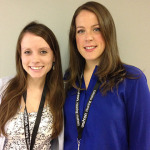
Summarized by Jillian Hanmore & Danena MacDonald, Dalhousie University, MSc Audiology
Objective
To review the best approaches for communicating audiologic findings and to discuss the ways in which medical information reporting is changing, particularly with the introduction of electronic medical records (EMR).
Summary
As audiologists, the way we communicate our audiologic findings can be as important as the tests we perform. How we organize and present our test results can influence how they are interpreted; this was the main theme of Dr. Ramachandran’s presentation. Dr. Ramachandran discussed the importance of distinguishing between documentation and reporting in healthcare. She stated that documentation communicates what was done and what was found, whereas, reporting communicates what your findings mean and what needs to come next. When writing reports, audiologists need to be cognizant of who will be reading their reports and should tailor them accordingly. In a study conducted by Dr. Ramachandran and colleagues regarding otolaryngology descriptions that had been dictated from audiology reports, it was found that there were often discrepancies between what audiologists reported and how otolaryngology providers interpreted these results. In fact, most otolaryngologists and their residents had a tendency to bypass the written audiology reports and focus purely on the audiogram to interpret the test results themselves. It was also noted that the greatest incongruencies occurred when test results were abnormal. Considering the frequent collaboration between audiologists and otolaryngology providers, the importance of effective communication between these professionals is critical.
Dr. Ramachandran revealed some pitfalls of the audiogram that can result in misinterpretation. Considering her study’s findings that otolaryngology physicians and residents focused on the audiogram for test interpretation, it is of utmost importance that this form be well organized and coherent. Audiologists need to consider what information is necessary to include on the audiogram, how this information is presented and avoid adding nonessential material.
Dr. Ramachandran is a strong advocate for the standardization of reporting; uniformity has been found to encourage efficient reporting and result in more complete reports. Standardization can be achieved through the use of itemized reports, which are standardized lists of interpretations and findings. Dr. Ramachandran discussed the fact that itemized reports are not frequently used by audiologists; however, studies have shown that, compared to other types of reporting, itemized reports are superior as they tend to be clearer and more complete. Additional recommendations for effective report writing included a preference for detail – but not so much as to compromise brevity. The use of clear, simple language and avoidance of abbreviations was stressed, as well as the need for a standard lexicon for reporting. Dr. Ramachandran emphasized including the assessment of the results and plan for the patient at the top of the report, as this is what readers will most likely be searching for.
The health care system (particularly in the USA) is quickly adopting electronic medical reporting (EMR) and, as a result, audiologists need to be prepared for this new method for recording test results. With EMR, medical records will be more accessible to a greater variety of health professionals, as well as to the patients themselves. This further exacerbates the need for careful and effective reporting on behalf of audiologists. While new reporting challenges will no doubt arise from EMR, the healthcare field can certainly benefit from this transition. For example, discrete data capture becomes possible with EMR; this means that large-scale patient health and demographic information may be quickly and efficiently organized and used to note health trends, formulate strategies for public health and help inform audiology practice.
Relevance to Clinical Practice
Communicating and reporting test results to patients and to other healthcare professionals is a critical part of our role as audiologists. Electronic medical reporting (EMR) is rapidly being introduced into the healthcare system in the USA, and is increasingly gaining a presence in Canada. Dr. Ramachandran gives a comprehensive explanation of EMR and how it is currently being used in audiology clinics throughout the United States. In her talk, she highlighted both the benefits and the risks of EMR and discussed how, as audiologists, we can use this to better our practices.
Key Presentation Takeaways
Dr. Ramachandran’s talk reminded us of the constant need for re-evaluation of practices in the audiology clinic, not only in our testing, but also in how we communicate our test results. Just because something has been done one way for a long time does not necessarily mean it is the most effective method. Audiologists should always be evaluating the way they report test results to ensure that what they are presenting to patients and health care professionals is complete, efficient and well understood.
Dr. Ramachandran’s presentation also informed us of the great potential there is in discrete data capture that has become possible with the introduction of EMR. In the future, we will be able to use this discrete data capture to compile information on patients and use this to help better inform our practices.
Aging Ears and the Aging Brain: Information about the Brain for the Clinician
Speaker: Dr. Kelly Tremblay
Saturday, October 18, 2014: 9:00 am – 10:30 am
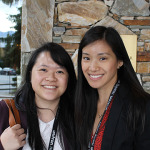 Summarized by Cora Sin¹ and Myron Huen²
Summarized by Cora Sin¹ and Myron Huen²
¹MCl Sc Audiology Candidate, School of Communication Science and Disorders, Western University
²MSc Audiology Candidate, School of Audiology and Speech Sciences, University of British Columbia
Objective of Presentation
As the general population ages, it is important to understand the underlying mechanisms behind the aging auditory system in order to examine and consider ways to best serve this growing group in the healthcare system. Thus, the three main objectives include:
- (i) Providing information about neuroscience with regards to aging and hearing loss.
- (ii) Demonstrating how older adults are at a disadvantage when making use of sound and the potential role of auditory training.
- (iii) Identifying clinical implications of the current research in the rehabilitation of older adults.
Summary of Presentation
Despite the individual variability in the aging process, consistent communication difficulties occur with advancing age. For example, “I can hear you, but I cannot understand you” is a common complaint among older adults. It is likely that declines in both bottom-up processes and top-down processes contribute to perceptions of audible but distorted speech. This summary focuses on how aging impacts the quality of the signal going up to the brain. The Temporal Processing Hypothesis outlines that the communication difficulties experienced by older adults is partly due to age-related factors, which affect the ability of neurons to synchronize and time-lock to changes in the acoustic waveform. This decline occurs even in the absence of increased pure tone thresholds.
Age-related declines in temporal resolution have been documented using voice onset time (VOT) discrimination tasks. Therefore, one may expect to have trouble differentiating between consonants that differ only by temporal cues (e.g., /b/ and /p/ are distinguished by voicing). Age-related changes in temporal processing abilities have also been investigated through the use of auditory evoked potentials (AEPs) in older and younger adults with normal hearing. For instance, the frequency following response (FFR) is an AEP that reflects neural phase-locking activity in the auditory brainstem. It is sensitive to the spectral characteristics of a stimulus. Research has shown that FFR amplitudes decrease with age, suggesting a weaker neural representation of spectral information that may be important for speech understanding. Another AEP response studied is the P1-N1-P2 complex, where age-related differences in latency, amplitude, and thresholds are reported. In comparison to young listeners, prolonged N1 and P2 peak latencies are recorded from older adults when elicited by the same stimulus. Studies have also shown that older adults, with and without hearing loss, have more difficulty than younger adults in discriminating speech sounds. These age-related differences are minimized with lower presentation rates, which indicate that auditory neural synchronicity deteriorates with increasing rate and age. Furthermore, aging may compromise the ability to detect interaural phase differences, a binaural cue that is important for localization. Research suggests that the physiological detection of phase change is slower for older adults and that it is also frequency-dependent; older adults require lower frequencies in order to reliably detect phase changes when measured with cortical responses.
As evidenced above, aging affects the ability to perceive time-varying acoustic cues. Since these problems are further augmented by presbycusis, it is not surprising why older adults continue to experience communication difficulties even after providing audibility through proper amplification. One approach that may improve speech understanding is through auditory training, which is a form of aural rehabilitation that involves listening exercises to enhance an individual’s ability to perceive speech. Although some studies suggest that temporal processing can be improved through auditory training, as reflected by larger P2 amplitudes, other studies disagree because resulting differences before and after training decrease with age. While individually, some people may benefit from auditory training, the group effects are not robust due to large within-group variability. Nevertheless, engaging individuals with sound is a healthy practice that does not pose additional harm.
Relevance to Clinical Practice
It is important for the clinician to acknowledge changes in the aging brain when providing treatment to an older adult with hearing loss. Hearing aid processing results in an altered signal to noise ratio; this aspect may contribute to variable outcomes among hearing aid users. Accordingly, some hearing aid users may continue to report minimal improvement in speech understanding despite appropriately fitted hearing instruments. In these situations, it may be beneficial to counsel patients about the brain, while approaching their problems in a multidimensional and inter-professional manner to help them overcome their communication difficulties.
What We Learned from the Presentation
From this presentation, we gained a better understanding of the effects of aging and age-related hearing loss that can impact the physiological detection of acoustic cues and how this may relate to speech perception. Moreover, we learned how behavioural and electrophysiological research on the aging auditory system can be applied to the development and improvement of audiological rehabilitation methods, such as auditory training and counselling.
Use of the Extended Speech Intelligibility Index (ESII) and Hearing in Noise Test (HINT) to quantify functional hearing ability: Parts I and II
Speaker: Dr. Sigfrid D Soli, University of Southern California, Los Angeles, CA
Friday October 17, 2014: 3:00pm-4:15pm
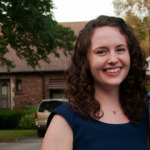 Summarized by Susan T. Eitutis, University of Western Ontario
Summarized by Susan T. Eitutis, University of Western Ontario
Communication handicaps impact one’s ability to perform in real world listening situations. Hearing in noise is a major factor contributing to communication handicaps and can have major implications in occupational and clinical medicine. Occupational and clinical medicine rely on the ability to determine the degree to which someone’s hearing hinders their performance, particularly in noisy situations. Therefore, it is important to develop a test for clinical and occupational use to determine our functional hearing ability in real world environments. Using a combination of the Extended Speech Intelligibility Index (ESII) and the Hearing in Noise Test (HINT), Dr. Soli and colleagues have developed the framework necessary to predict functional hearing ability that can be applied to real world environments.
The ESII is a measure that is used to predict speech intelligibility based on specific frequency regions when noise is non-stationary. It incorporates information about the level of background noise and frequency content over a specified time period to determine the minimum signal required for an individual to score 50% on basic speech recognition tests. In quiet environments the minimum ESII value for intelligibility is roughly 0.3 for normal hearing listeners, but can be substantially larger for hearing impaired listeners. As the characteristics of the listening environment are altered, the minimum ESII value required for effective speech communication is affected. This change in ESII appears to be dependent upon the type of noise signal present in the environment: whether it is informational (containing speech information) or energetic (non-speech noise) masking. The ESII can also be used to examine the impact of vocal effort on speech intelligibility with background noise. When background noise is present, effective communication is compromised when speaking at with normal vocal effort. However, the likelihood for effective communication can be improved by increasing vocal effort.
Since the ESII value is affected by the listening conditions, this measure can be used to predict effective communication under different real world listening environments. When comparing ESII values to HINT SRTs, you can see a trend that indicates more severe communication impairment with larger signal to noise requirements on the HINT. By creating what is known as an ESII-intelligibility function, the relationship between ESII values and percent intelligibility can be used to estimate functional hearing ability. To create an ESII-intelligibility function for an individual the ESII must be measured at several different intelligibility levels (e.g., 30%, 50%, 70%). To do this, the HINT is administered three times and each result is converted to an ESII value. A trend line is then fit to the three measured conditions and used to predict speech intelligibility in various real world listening situations.
The accuracy of the ESII-intelligibility function was tested for normal hearing and hearing impaired listeners. For both groups, the predicted intelligibility was similar to the measured intelligibility determined using real world noises. When comparing between normal hearing and hearing impaired listeners, hearing impaired listeners required a higher ESII value than normal hearing listeners in order to achieve the same intelligibility score. The ESII-intelligibility function was also shallower for hearing impaired listeners compared to their normal hearing counterparts. This is consistent with what would be expected based on the added distortion in the hearing impaired system. This distortion causes hearing impaired listeners to require greater increases in signal to noise ratio to see an improvement in speech intelligibility.
When applying the ESII-intelligibility model to noisy listening situations, intelligibility is best predicted when energetic masking is present rather than informational masking (or combination of both). Informational masking contains speech information. This makes understanding speech more difficult. In order to apply this model to situations with informational masking some modifications will be required to effectively predict speech intelligibility.
In conclusion, the ESII-intelligibility function can be used to accurately predict functional hearing ability in real world listening situations for normal hearing and hearing impaired listeners. As a result, treatments and environmental modifications can be developed that address the predicted communication handicaps. Currently, functional hearing ability is being measured using the HINT and the speech intelligibility index (SII) by various public safety and law enforcement agencies within the United States and Canada to predict communication handicap in common difficult listening environments. It is also being implemented in the clinical medicine sector, primarily as one of a battery of tests to determine the benefit of unilateral and bilateral cochlear implants. However, future research is required to incorporate modifications for informational masking parameters and binaural spatial release from masking.
Everything I Know About Hearing Loss – Part I
Speaker: By Mead Killion,
Friday October 17: 3:00pm-4:15pm
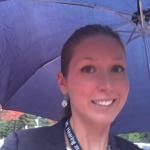 Summarized by Nicole Kutchyera, Dalhousie School of Human Communication Disorders
Summarized by Nicole Kutchyera, Dalhousie School of Human Communication Disorders
Dr. Killion’s presentation focused on re-familiarizing clinicians with various types of hearing loss and their effects on audibility, speech intelligibility, and hearing aid fitting. Part one of the two-part talk began with a review of several forms of hearing loss and their respective etiologies.
Temporary and permanent threshold shift were discussed as the result of short and long-term noise exposure. Dr. Killion emphasized the importance of performing noise dosimetry, utilizing damage risk criteria, and recommending appropriate hearing protection in order to preserve hearing and speech intelligibility. Despite the fact that evidence of differential susceptibility to noise-induced hearing loss across individuals can be gleaned from studies of ship builders in World War II, there is currently no way to reliably determine whether one’s ears are resilient to noise induced hearing loss or not. As such, hearing protection is recommended any time an individual exceeds 100% of the daily acceptable noise dose. Dr. Killion reiterated that just 20 dB of ear-plug attenuation can extend safe exposure time by a factor of 100 (e.g. from 1 to 100 minutes). Etymotic Research and Northwestern University are currently taking part in a Navy-sponsored study evaluating the potential to use otoacoustic emissions to measure individual susceptibility to NIHL. Preliminary evidence from Lynn Marshall (2011) suggested that a reduction in distortion product OAE may reliably precede a reduction in pure tone thresholds, suggesting that DPOAEs may act as the “canary in the coal mine” where noise-induced hearing loss is concerned.
Dr. Killion referenced Kujawa and Liberman’s 2006 study “Acceleration of age-related hearing loss by early noise exposure: evidence of a misspent youth” in a comparison of his own hearing thresholds to those of his brother, auto-engineer (and motorcycle enthusiast) David Killion. This study found that noise exposure early in life produces damage at the level of the auditory nerve, which makes the cochlea more vulnerable to later age-related hearing loss. Supra-threshold loss, or increased difficulty in challenging listening situations despite normal pure-tone thresholds, was discussed in relation to Kujawa and Liberman’s 2009 publication entitled “Adding Insult to Injury: Cochlear nerve Degeneration after “Temporary” Threshold Shift.” This study demonstrated that despite a return to pre-noise exposure threshold levels after temporary threshold shift, the mice had acute damage at the level of the inner hair cell afferent terminals and progressive degeneration in spiral ganglion nerve fibers.
Diplacusis, or the perception of false pitch, was discussed from a cochlear perspective. Dr. Killion described the ‘cochlear misrepresentation’ that results when a patch of dead IHCs is stimulated. Travelling waves that would normally activate a characteristic frequency region within the dead patch will instead stimulate a lower frequency region, causing the perception that a clear ‘E’ is actually a ‘dirty D’. This signal distortion can result in a loss of sound clarity and may be particularly troubling for musicians.
Dr. Killion concluded the talk with a discussion of the importance of speech-in-noise testing prior to the selection and fitting of amplification. Use of the Quick SIN and an Articulation Index estimate (e.g., via a count-the-dots audiogram) are important for determining patients’ signal-to-noise-ratio needs and expected intelligibility of speech.
Assessing the Impacts of Age, Hearing Loss, and Brain Injury on Central Auditory Function
Speaker: By Dr. Frederick (Erick) Gallun
Saturday, October 18: 1:30pm–2:45pm
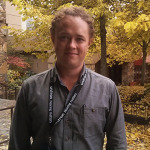 Summarized by Graham Raynor, MSc, University of British Columbia – Audiology
Summarized by Graham Raynor, MSc, University of British Columbia – Audiology
Objective/Goal of Presentation
To present recent research on: relationships between hearing loss, aging, blast exposure and central auditory processing, and the development of tools that are implementable in the clinic.
Summary of Presentation
In one of the highlights of the conference, Dr. Erick Gallun presented several fascinating studies on auditory processing, moving from laboratory rigor to clinical practicality. First, in a series of experiments conducted at the National Center for Rehabilitative Auditory Research (NCRAR), Gallun and colleagues explored the relationship between aging, hearing loss and auditory processing (Gallun et al., 2014). In one comparison, temporal processing abilities were assessed using monaural and binaural discrimination tasks and stimuli with carefully manipulated temporal fine structure. Aging was associated with declines across all tasks, with no differences between different stimuli types. However, the complicated pattern of results observed suggests that hearing loss and aging contribute somewhat independently to changes in temporal processing and that a task monaural temporal task may recruit different processing mechanisms than a similar binaural task. Furthermore, low correlations within participants across different tasks/stimuli implicate the poor predictive validity of such artificial tasks in predicting real-world performance.
A subsequent experiment examined binaural processing in a more naturalistic task: using spectrotemporal and spatial cues to separate competing talkers, measured as the spatial release from masking (Gallun et al., 2013). In the initial iteration of this experiment, there were sixteen conditions each with a lengthy adaptive tracking procedure for finding Target-to-Masker Ratio (TMR). However their thoroughness paid off with results validating the use of this task and indicating that aging and hearing loss contribute independently to worsened spatial release from masking. At this point in his presentation, Dr. Gallun amusingly described his not-so-surprising realization that an hour-long test inside an anechoic chamber would not be very practical for most audiologists. Over the next experiments he presented the progressive validation of more convenient versions of this procedure resulting in a tool that is satisfyingly brief and clinically pragmatic for assessing an individual’s particular ability to segregate streams of speech in the real world.
Shifting gears, Dr. Gallun exhibited his group’s work on auditory processing in people with brain trauma (Gallun, Diedesch et al. 2012; Gallun, Lewis et al., 2013). It is known in our field that there is startlingly high prevalence of auditory processing disorder (APD) in people who have had a traumatic brain injury (TBI). At the Walter Reed Medical Hospital, veterans who were exposed to blasts had their auditory abilities tested and compared to non-exposed control subjects with a comprehensive battery of behavioural tests. Those in the blast exposed group had a much greater likelihood of performing below the normal range. Furthermore, half of the blast-exposed group did not actually have a TBI diagnosis, yet they also had a similarly elevated likelihood of auditory processing deficits. These results are consistent with other research suggesting that even mild brain trauma can disrupt auditory processing abilities resulting in very legitimate complaints of poor speech-in-noise understanding that is not at all predictable from the audiogram. The participants’ electrophysiological responses were also measured. The averaged auditory brainstem response (ABR) was not significantly different between groups whereas there were several differences in late-evoked (cortical) potentials. These results implicate dysfunction in central (as opposed to peripheral) processing as being responsible for the speech-in-noise deficits.
As the participants in the above study were recently blast-exposed, it is important to know whether these auditory deficits are permanent or will resolve with normal healing. Preliminary results from an ongoing study were presented in which another sample of veterans were studied, who were blast-exposed an average of eight years previously, without more than a mild hearing loss. This group had a much greater perceived hearing impairment corresponding to much higher rates of abnormal scores on the behavioural tests of auditory processing. This showed that indeed the auditory deficits did persist over the many years since blast exposure. The participants ranged broadly in age and, interestingly, the participants who were older at the time of blast exposure tended to have more abnormal auditory processing scores relative to the non-exposed group at the same age. This suggests that aging increases the susceptibility to auditory processing dysfunction following brain trauma.
As a whole, the studies presented make it clear that even normal aging and hearing loss can result in widely varying patterns of auditory processing ability. Their work with veterans can be extrapolated to many populations that experience even mild brain trauma, seriously underscoring the importance of studying how to better characterize these clients in order to learn how to rehabilitate them.
Relevance to Audiology Science and/or Clinical Practice
Since these auditory processing deficits often arise from central dysfunctions, they cannot necessarily be easily predicted or explained by conventional clinical audiometry. Given the worryingly high prevalence of acquired APD after brain trauma, it is becoming increasingly important to understand the tests being developed to assess these patients. The use of tools that measure holistic listening performance in realistic tasks, such as spatial release from masking, can be combined with tests of more isolated abilities to better analyze clients’ subjective experience and create appropriate treatments targets.
What You Learned/Took Away from the Presentation
For me, the high risk that even a mild brain trauma can put you at for acquiring an auditory processing deficit was alarming, especially when in the apparent absence of peripheral hearing damage. This really emphasized the fragility of the neural architecture underlying our capacity for speech in noise analysis.
Hyperacusis and Misophonia in Clinical Practice
Speaker: Glynnis Tidball,
Saturday October 18, 2014: 10:45 am-12:00 pm
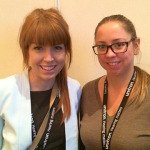 Summarized by Danielle Carson (Western University) & Yolanda Evong (Dalhousie University)
Summarized by Danielle Carson (Western University) & Yolanda Evong (Dalhousie University)
This presentation’s objective was to provide education on the different types and prevalence of hyperacusis, as well as ways to identify and treat these patients. Hyperacusis is a disorder in which a person experiences a decreased tolerance for everyday normal sounds, often resulting in a significant amount of emotional and psychological distress. It is a condition that continues to remain somewhat elusive in the field of audiology, with a lot of unknowns in terms of its root causes and mechanisms. The application of research and knowledge that is available, however, warrants the division of hyperacusis into four major subcategories: loudness, annoyance, fear, and pain.
Loudness hyperacusis is the act of judging moderately intense sounds as being very loud in comparison to what an average person would rate them (i.e. exhibit lower loudness discomfort levels). Possible mechanisms for this phenomenon include stapedius reflex dysfunction, abnormal outer hair cells resulting in increased auditory gain, and/or a central mechanism involving an imbalance between the excitatory and inhibitory chemical pathways. Loudness hyperacusis is distinct from loudness recruitment, which has a known cochlear mechanism and is always accompanied by a cochlear hearing loss.
Annoyance hyperacusis is described as a pervasive and persistent negative emotional reaction to everyday sounds. Individuals may perform typically in the sound booth despite being very symptomatic in day-to-day situations. Compared to the loudness subcategory, annoyance hyperacusis is rooted less in loudness judgment and more in a psychological response to the sound context or the person making the sound. Misophonia, which literally translates as the hatred of sounds, is similar to annoyance hyperacusis and could potentially be a more severe subgroup in which sufferers experience anger or rage in response to specific sounds made by others. Individuals with misophonia typically avoid “trigger sounds” and take measures to minimize perception of the offending sound by using earplugs or listening to music through headphones. Some clinicians refer to misophonia as “selective sound sensitivity syndrome” or “4S”.
Finally, fear hyperacusis is an anxiety around the possible detrimental effects of sounds (i.e. hearing damage, pain, tinnitus), and pain hyperacusis is a condition in which individuals experience pain from lower level sounds than would be expected.
An Internet survey by Andersson et al. (2002) suggests that the prevalence of hyperacusis may be as high as 9% in the general population, with 2% of individuals reporting a severe form. In children and tinnitus patients the suggested prevalence is approximately 3.2% and 40% respectively. Hyperacusis is more prevalent in patients with post-traumatic stress disorder, hearing loss, acoustic shock injury and autism spectrum disorder.
To identify patients who suffer from hyperacusis a thorough case history is required as often a causal traumatic event can be identified. An audiologist should also watch for certain telling behaviours to diagnose hyperacusis. These behaviours include discomfort from test stimuli, eagerness to remove insert earphones, arriving at the clinic wearing hearing protection and complaining that moderate intensity sounds increase tinnitus. Finally, hyperacusis can be identified through administering a hyperacusis questionnaire.
Treatment of hyperacusis requires intensive counselling including validation of the patient’s experience, explanation of possible mechanisms of hyperacusis, discussion of proper use of hearing protection and how overuse of hearing protection can exacerbate hyperacusis. Gradual elimination of inappropriate ear plug use is encouraged. An additional component to counselling may include sound therapy. Although seemingly counterintuitive, the addition of sound via ear-level sound generators in the daytime and a bedside sound machine at night can make other, more bothersome sounds more acceptable or less noticeable and can potentially help to normalize central auditory gain. Individuals who require hearing protection for work or recreation may benefit from electronic hearing protection. Electronic hearing protection mildly amplifies ambient sounds and attenuates input when sound levels exceed 82 dB A, thus providing protection from hazardous noise while allowing the user to hear warning sounds and feel “safe” in noise.
Due to the frequent comorbidity of tinnitus and hyperacusis, it is reasonable to assume that audiologists will regularly encounter hyperacusis patients. Although hyperacusis may have a psychological component, audiologists still play a vital role in the treatment of this disorder. Audiologists should have the knowledge and tools to identify and treat these patients or direct patients into care of specialized providers when appropriate.
The Role of the Clinical Audiologist in the Interventional Audiology Movement
Speaker: Dr. Brian Taylor Thursday,
October 16, 2014: 11:15am-12:30pm
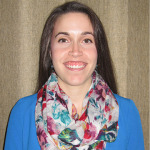 Summarized by Taylor Rushbrook-Dickey, Dalhousie University
Summarized by Taylor Rushbrook-Dickey, Dalhousie University
Dr. Brian Taylor gave an informative presentation entitled, “The Role of the Clinical Audiologist in the Interventional Audiology Movement”. Dr. Taylor stated that there is currently a popular movement towards healthy aging and posed the question, “How do we fit into that movement?” To discuss this topic further, his presentation focused on four main objectives: (1) Educating the audience in terms of attracting more patients to a local clinic or practice, and how to best address patients’ needs; (2) Describing the impact age-related hearing loss has on the public and how that effects healthy aging; (3) Discussing comprehensive hearing rehabilitation strategies for adults of all ages, in addition to implementation in a private practice setting; (4) Considering avenues to involve other health care professionals in the hopes of raising awareness on hearing loss and its related issues, as well as healthy aging.
Dr. Taylor pointed out the fact that health care is changing and that we must embrace a “pit crew” mentality. In essence, inter-professional collaboration between audiologists and other health care professionals should become more common practice. A team attitude should be more readily adopted, aspiring to better serve patients and clients. He also provided statistics illustrating the fact that audiologists are serving approximately 1 in 8 people with hearing loss – clearly an abysmal figure. “Interventional audiology” was presented as a way that audiologists could improve this statistic.
The four pillars of interventional audiology were explained and discussed in terms of how they can be related to everyday practice. The first pillar focuses on exerting more social pressure to get “non-consulters” to act sooner. Positive triggers to action, such as drawing attention, highlighting a hidden risk, offering a solution and increasing patient’s self-esteem, could enable a greater portion of the general public to be aware of audiological services while promoting a more positive interaction. The second pillar focuses on engaging younger patients in the process of self-testing and preventative services with audiologists. For example, having hearing screening technology in the waiting room of a primary care physician’s office might facilitate this engagement of a younger population with a milder loss. The third pillar is focused on leveraging changes in the health care system to partner with primary care physicians and other medical professionals. This ties into the “pit crew” mentality that was mentioned earlier, as opposed to the ‘cowboy’ mentality that is much less team oriented. Many research articles on the science of age and hearing loss were provided to support the numerous effects hearing loss can have on a patient’s body and quality of life. Due to the multitude of possible changes, Dr. Taylor emphasized the importance of having a team of health care professionals on board to better serve patients. The fourth and final pillar of interventional audiology is focused on modifying and updating the clinical approach to patient interaction to deemphasize the dispensing of devices. Dr. Taylor referenced the spiral of decision making by Dr. Carson and encouraged audiologists to immerse themselves in this sooner. Specifically, he discussed comparing and contrasting, cost versus benefit, and control, all from a patient’s perspective.
During his presentation, Dr. Taylor also described several key points in motivational interviewing which include the ability to express empathy, to develop discrepancy, to roll with resistance, and to support self-efficacy. This interviewing technique is referred to as solution-based interviewing, which promotes taking action, focusing on the future and looking for a solution.
Dr. Taylor succeeded in relating research-supported methods to practical applications for clinical audiologists. I had not considered the pillars of interventional audiology or the spiral of decision making, but these could transform our traditional clinical approaches in positive ways. Dr. Taylor’s presentation was also an excellent reminder that although our population is aging and will need audiological services, we must not lose sight of the fact that younger generations should also be a key focus for health care professionals.
What Every Audiologist Needs to Know About Autism Spectrum Disorders (ASD)
Speaker: Gail Whitelaw, PhD,
Ohio State University October 16, 2014
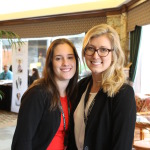
Summarized by Stephanie Loder (Western University) and Allison MacEacheron (Dalhousie University)
The objectives of this session were to understand the diagnostic criteria of autism spectrum disorder (ASD), to suggest some modifications for audiologic testing children with suspected or diagnosed ASD, and to discuss treatment options. ASDs are characterized by persistent deficits in social communication and interactions across multiple contexts. Characteristic features include disrupted speech, deficient physical coordination, aggression (often towards themselves), multisensory integration deficits, sleep disruptions and psychomotor hyper-reactivity. However, symptoms can be non-specific and easily confused with other types of disorders. Current statistics suggest that 1 in 160 kids have ASD, with 4 times more males than females. Interestingly, the prevalence of ASD has had a 10-fold increase in growth over the past two decades. Questions arise as if this is an increase in prevalence or if it could possibly be due to increased awareness, changes in diagnostic criteria or earlier screening. Signs of ASD typically appear at 12–36 months of age but, unfortunately, ASD is usually not diagnosed until the child is 3 or 4 years of age.
There are many children who have co-morbid hearing loss and ASD; 40% of children with congenital hearing loss have at least one other developmental disability. Current research indicates that 1–6% of children with ASD have hearing loss, however this statistic is likely higher due to the difficult-to-test nature of ASD, the overlap of symptoms with hearing loss (such as failure to respond) and complicating factors, such as the fact that about 80% of children with ASD also have cognitive impairment. A phenomenon known as “diagnostic overshadowing” often occurs, where ASD behaviors mask signs of hearing loss. Although there appears to be a connection between ASD and hearing loss, there is no conclusive evidence or good consistency across current research. So what is the Audiologist’s role? Audiologists are at the front line of the health care system for children with suspected ASD and may be the first encounter for families. In some cases, Audiologists may push for further developmental testing and diagnoses.
The important, but often difficult task of the audiologist is to complete a hearing test. To reduce the difficulties of testing a child with suspected or diagnosed ASD, an audiologist can pre-prepare some tools and make modifications to the test procedures. Children with ASD often like predictability, so explaining to them what is going to happen, step by step, may relieve anxiety. Social Stories are a great tool for positively affecting the child’s social understanding and behaviours. These stories should be short, reassuring, straightforward and accompanied by photos of the clinic and sound booth to let the child know what to expect, if possible. Visual schedules can also be used to let the child know about the transitions throughout the hearing tests, and particularly useful given that most people with ASD classify themselves as visual thinkers. Social stories and visual schedules should be reviewed daily for optimal benefit. When it comes to the test itself, case histories can include screenings for Autism, such as the Modified Checklist for Autism in Toddlers, Revised (M-CHAT-R). Audiologists can also inquire whether the child startles or responds to their name, and whether they have any abnormal auditory behaviors. Conventional testing is often not the best choice for testing children with suspected or diagnosed ASD. Otoacoustic Emissions (OAEs), play audiometry, visual reinforcement audiometry (VRA) or behavioural observation audiometry (BOA) tend to be the preferred testing methods of clinicians. When testing children with suspected ASD, Audiologists should consider modifying procedures where appropriate and getting creative. For example, children with ASD often love numbers, so incorporating a numbers game into the hearing test may increase compliance from the child. Other ideas include animal sounds, songs and alternative stimuli. Furthermore, electorphysiologic techniques that reduced limitations of the traditional ABR, such as using the Vivosonic Integrity Acoustic Brainstem Response (ABR) device for screening/testing children with ASD, should be considered. This particular device uses three electrodes, Bluetooth, and signal processing technology to reduce the impact of noise for a quick ABR screening that is effective in reducing referral rates for difficult-to-test children.
Persistence is key for audiologists testing children with ASD, and patience and creativity are great assets as well. ASD is a complex developmental disorder, with many symptoms similar to those of hearing loss. Many children with ASD have co-morbidities and many of them are difficult to test, but every child is unique. As Gail Whitelaw said at the end of the sessions: “If you’ve seen 1 child with autism – you’ve seen 1 child, not autism.”
Early Spoken Language Development Following Pediatric Cochlear Implantation: Direct Comparison of Non-tonal (English) and Tonal (Mandarin) Language Development
Speaker: Sigfrid Soli, PhD, University of Southern California, Los Angeles, CA
October 18, 2014: 1:30-2:45pm
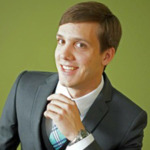
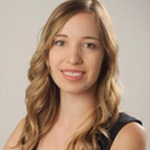
Summarized by Brendan McDonald, Western University & Selena Vermey, University of British Columbia
Language outcome measures are a clinically valuable tool that can be utilized to evaluate the development of speech and language abilities in children with hearing aids and cochlear implants. We have well developed test batteries and norms for children in many languages, but one challenge we face is implementing these measures in clinic to assess development in patients with hearing loss. Dr. Soli’s discussion on the language development of non-tonal (English) and tonal (Mandarin) pediatric cochlear implant recipients points out the importance of having easily accessible measurement tools to gather data and compare language outcomes of cochlear implant recipients, normal hearing children, and across languages.
Pediatric norm-referenced outcome assessment data were gathered from the Extended Outcome Study (EOS). Amongst other studies, norm referenced outcome measures were used from early prelingual auditory development (Zheng et al., 2009a), early speech perception (Zheng et al., 2009b; Zheng et al., 2009c; Wong et al., 2007), and early language development (Li et al., 2014; Soli et al., 2012). The EOS looked at longitudinal speech and language development of Mandarin up to 6 years of age, normal developmental trajectories, and early measures of successful or delayed development of children with cochlear implants or hearing aids. One of the more important measurement tools used was the Mandarin Communicative Development Inventory (MCDI) (Tardif & Fletcher, 2008). This measurement tool assesses Words & Gestures as expressive and receptive vocabulary between 8–16 months of age for normals, and Words & Sentences as expressive vocabulary for 16–30 months of age for normals. These two tests have hundreds of items, and as such are not easily accessible for clinical use. A Simplified Short Form (SSF) (Soli et al., 2012) was developed to reduce the amount of test items, making the assessment process easier. Receptive and expressive language abilities were measured in Mandarin pediatric patients using a Simplified Short Form (SSF) of the Mandarin Communicative Development Inventory (MCDI). The scores from the SSF MCDI were expressed in terms of normal equivalent ages, which could then be used to derive normalized equivalent growth functions from the data. What a normalized equivalent growth function can tell us is how well these children are developing in their respective skill compared to normally developed children. Growth rates with a slope of 1 are on par with normally developing children. Increases in growth rate indicate accelerated growth, and declining growth rates indicate delayed growth. This information is valuable in giving us insight into a child’s progression of speech and language.
The data indicated that receptive vocabulary development for words and gestures was not dependent on age of implantation. Children who were implanted later had steeper growth rate functions, indicating that these children had some previously developed resources that helped them catch up to their age matched peers. Growth rates in the first 12 months of cochlear implant use were equivalent of 18 months of development in normal hearing children. When looking at scores for expressive language outcomes in words and gestures, normalized equivalent ages were comparable to those results from receptive outcomes.
Outcome measures for expressive vocabulary for words and sentences indicated that normalized vocabulary growth rates of cochlear implant children to be significantly less than normal. These growth rates were 0.54–0.68 of the vocabulary growth rates for normal developing children. Growth rates were significantly lower for the oldest implant age group (>3 years).
Direct comparison of early Mandarin and English vocabulary growth rates revealed no significant differences between the 1–2 year old implant age groups, lending support to the idea that early language development is universal in nature. Surprisingly, the 2–3 year old group exhibited significantly lower vocabulary growth rates for the English group when compared to the Mandarin group. As a group, discussion concerning this unexpected result revolved around the differences in linguistic content between the two languages. For instance, there is a greater emphasis on syntax and phonology in English, so we speculated if we would still observe this difference with measures that assess linguistic content beyond vocabulary. Lastly, there was no significant difference observed between the >3 year old implant group, however the overall growth rates were significantly lower.
This research has shown us the development, validation, and use of assessment tools for clinical application to evaluate speech and language development of children with cochlear implants. These language development tests can give us insight into individual language growth as well as comparisons to developmental norms. In addition, we see how these tools can be used to make cross-linguistic comparisons, showing us the plasticity of the human auditory system.
The Life of the Inner Ear
Speaker: Sumittrajit Dhar, PhD, Associate Professor, Dept. of Communication Sciences and Disorders, Northwestern University
Saturday October 18, 2014: 10:45am – 12:00pm
Summarized by Rajeet Lidhar, Western University, M.Cl.Sc. Audiology
Goals
- To frame maturity/changes occurring in the cochlea over a lifespan viewed through the lens of otoacoustic emissions (OAEs).
- Understanding what stimulus to use, what norms, and what frequency range when analyzing age-related DPOAE changes.
Summary of Presentation
Otoacoustic Emissions
Otoacoustic emissions (OAEs) are a diagnostic tool which relies on the outer hair cells of the cochlea to emit a faint but detectable signal in response to an incoming sound. There are three main types of OAEs: spontaneous, transient, and distortion product otoacoustic emissions (DPOAE). Spontaneous OAEs occur in the absence of any input signal to the cochlea and are present in up to 50% of healthy individuals; they have little clinical use. Transient OAEs are click-evoked but provide poor high frequency information or frequency specificity. DPOAEs are evoked in response to two input tones, and the resultant basilar membrane activity produces a family of arithmetically-related emissions (2f1 – f2 being the strongest). DPOAEs essentially provide the most reliable-frequency specific information about basilar membrane and outer hair cell function. Furthermore, technological advances now allow the study of DPOAE changes in the entire cochlea such as accurate measurement is now possible up to 20kHz. This allows outer hair cell functional changes to be seen at the base of the cochlea.
When DPOAEs are detected, there are actually two places on the basilar membrane which they originate from. One is at the physical site of overlap between f1 and f2 (e.g. like the receiver), and the other is at the characteristic place on the basilar membrane associated with the frequency output at the place of overlap. These components can be separated when detected to see the contribution of each, as their phases change at different rates as a function of frequency.
Experiments have been conducted to determine the precise source of DPOAEs; the two most likely being either the outer hair cell (OHC) prestin protein or a structural protein in the stereocillia known as stereocilin. Using knockout mice, prestin and stereocilin were removed in different populations and the effect on DPOAEs measured. At high input levels, DPOAEs could be produced in prestin-knockout mice (much like in a conductive loss), but never in stereocilin knockouts. It is now believed that stereocilliary nonlinearity is the most likely source of DPOAEs.
Lifespan Changes
DPOAEs continue to strengthen and develop after birth until they reach a maximum strength at approximately 8 months of age. From here, gradual decline in DPOAE emissions begin, with the most significant changes occurring for ultra high frequency (near 20 kHz) basilar membrane regions in the middle age group. As we continue to age, DPOAE emissions continue to decrease significantly, most prominently in the basal cochlear frequency range with significant changes observed between 10 and 17 kHz between 30 and 45 years of age. However individuals experiencing this loss will still test as normal hearing listeners, since modern audiological equipment can only accurately test thresholds up to 8kHz.
DPOAE changes which occur over the lifetime leave us with the question of what norms to use when examining individual DPOAE data. Technology now exists that could enable collection of age-specific high-frequency data. Presently, DPOAEs do not begin to show decline with modern testing equipment until the damage reaches the 8kHz basilar membrane region. Collection using this new high-frequency stimulus technology would allow us to gather normative data that could be used to detect auditory system changes earlier.
Hearing Restoration: A Surgical Perspective
Speaker: Dr. Jane Lea, Department of Surgery, University of British Columbia, Vancouver, BC
October 18, 2014 at 10:45AM
 Summarized by Rachel Jordan, UBC, MSc Audiology Candidate
Summarized by Rachel Jordan, UBC, MSc Audiology Candidate
Summary
Dr. Lea began her presentation on surgical procedures and candidacy criteria for hearing loss with a discussion of the basic principles of ear surgery. Goals of ear surgery including making the ear safe, dry (no otorrhea), and functional in terms of hearing. It is also important to avoid operating on the better ear. She explained that she spends much of her time convincing people not to have surgery, because often the potential improvement in hearing does not warrant the risks of surgery. The patient’s main motivation is often to improve hearing, but the surgeon’s first concern is making the ear safe and free of disease, and improving hearing is secondary to this.
The risks of ear surgery include further hearing loss or a dead ear, vestibular disruptions, damage to the chorda tympani or facial nerves, leaking cerebrospinal fluid, eardrum perforation, or failure of the surgery.
The first set of surgeries described pertained to options for aural atresia. Opening up the ear canal is a very risky operation, and not Dr. Lea’s first choice. The simplest option is a bone-anchored hearing system, in which a screw is simply drilled into the skull. Middle-ear implantable devices are prosthetic attachments on the ossicles which are activated by a transducer on the side of the head, much like a cochlear implant. Finally, a round window vibroplasty replaces all of the ossicles with a vibrating device.
Exostoses in the ear canal can also be removed surgically, if they begin to cause hearing loss or recurring infections. They are then removed by a post-auricular incision and drilling away the extra bone.
Middle-ear effusions often resolve on their own without intervention, but if they persist they often require tympanostomy tubes to be placed. In very rare instances the effusion is actually cerebrospinal fluid, and this is diagnosed by persistent clear otorrhea following tympanostomy tube placement that tests positive for B-2 transferrin; surgery is indicated in these rare cases to repair the dural defect in the brain. Unilateral middle ear effusions can also be the first presentation of nasopharyngeal cancer and Otolaryngologists will perform flexible nasopharyngoscopy in these cases to examine the region of the Eustachian tube and rule out this condition.
Otitis media is often treated medically with antibiotics. Tympanostomy tube insertion is typically only performed in cases that intratemporal or intracranial complications arise.
Myringotomy and tympanostomy tube placement can be performed in the office for adults and is a relatively simple procedure, but requires a general anesthetic for children.
Most eardrum perforations heal on their own, but surgery is often necessary if the perforation is chronically infected and fails medical treatment or if cholesteatoma forms. Perforations can also be operated on based on patient preference (wishes to swim without ear plugs, or does not want to wear hearing aids). Perforations can be repaired with a surprising assortment of materials, including cigarette paper!
Dr. Lea described cholesteatomas as “skin where skin shouldn’t be.” Cholesteatomas are unsafe, and must be removed. Acquired cholesteatomas can be caused by perforations or persistent negative pressure. The full extent of a cholesteatoma can only be seen with imaging, but a portion of it can often be seen in the attic of the eardrum.
Another common ear surgery is ossicular chain reconstruction. When prosthetics are inserted into the middle ear, they must be covered by cartilage, so the body does not reject them.
Otosclerosis can be treated by a stapedotomy; however, Dr. Lea prefers to patients to trial hearing aids first. Surgery can be considered if hearing aids are not an option, and if prospective post-surgical hearing can be improved to 30 dB or to within 15 dB of the better ear.
Dr. Lea shared many images and videos of surgery, and discussed and demonstrated the advantages of an endoscopic view over a microscopic view. It was refreshing to hear a different perspective on treatments for hearing loss, and useful to have a better understanding of what happens when patients are referred to an ENT.
Relevance
Audiologists diagnose hearing losses that may be surgically treatable and more importantly, may indicate some form of ear disease requiring medical attention. By reviewing various causes of conductive loss, their treatment options and potential health risks, audiologists can make better recommendations regarding follow-up of these patients.
Take Away
While the benefit of improved hearing may appear significant, it must always be weighed against the risks. With an ear surgery, there are always some risks that all the hearing in that ear may be lost. Therefore, patients with middle ear pathologies that do not represent a health risk should be encouraged to use hearing aids as an alternate intervention for their hearing loss.
Secondly, some middle ear pathology poses health risks to patients and requires medical attention. Audiologists must be thorough in their investigation, particularly with otoscopy, to ensure that health risks like cholesteatoma do not go unnoticed.
Management of Older Adults with Hearing Loss and Dual Sensory Loss: Insights from the Blue Mountains Hearing Study and Dual Sensory Loss study in Australia
Speaker: Catherine McMahon
Friday October 17, 2014 4:15-5:30pm
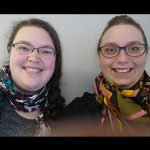 Summarized by Jillian Baker and Laura Hart, Dalhousie University
Summarized by Jillian Baker and Laura Hart, Dalhousie University
A common theme at the 2014 CAA Conference was how audiology needs to change as a profession to accommodate the ever-growing aging population. The shift in focus from a technology driven model of care to one centred on more functional outcomes is aimed at increasing accessibility and satisfaction with hearing healthcare services. With this shift in focus also comes the realization that as the population ages, the prevalence of comorbid health conditions increases.
Of particular concern to audiology specifically, is the increasing occurrence of hearing loss accompanied by vision loss, also known as dual sensory loss. Unfortunately, our current health care system is ill-equipped to manage individuals with comorbid conditions as there is a disconnect between the various health care services. With this in mind, Catherine McMahon and colleagues wished to pilot a hearing screening and education model (HSEM) to individuals seeking low-vision services in Australia with the hopes of improving access to hearing services for this population. Of interest to researchers were the findings from this study that suggested that, while the HSEM was positively received by all participants for its efforts towards integrating vision and hearing services, less than half of the referred individuals went on to seek further diagnostic/rehabilitative hearing services. While these results support the implementation of an integrated health care model, there remain clear barriers to seeking rehabilitation services.
What, then, accounts for these individual differences in help-seeking behaviour? In a qualitative study, Dr. McMahon and colleagues sought out 19 individuals with dual sensory loss and analyzed their responses in the context of developing a model of help-seeking behaviour. Overwhelmingly, participants had a tendency to frame their sensory losses in the context of their lives in general. For example, rather than speaking about the hearing or vision loss specifically, they tended to express concerns regarding issues such as general loss of independence, becoming a burden to their loved ones, and loss of personal identity. These responses spoke to the driving forces behind seeking help, with overall themes including perception of sensory loss, awareness of the impact of their sensory loss, and the associated effort.
Overall, the concerns expressed by the individuals participating in these studies remind us as clinicians that we need to listen to our patients more holistically rather than focusing solely on the impairment that we assess. This in turn will help us understand our patients and we will be better equipped to tailor rehabilitation to their lifestyle needs. Our patients are more than a set of ears and we need to consider the person attached to them when addressing their hearing concerns. To do so requires us to move beyond technology towards a future of integrated healthcare services. This movement will require cooperation from not only local clinicians, but national and global regulatory bodies as well, as this is clearly an issue of policy rather than simply one of mindset. Hearing loss is a chronic problem, its solution is not a simple hearing aid fitting, but rather a continuous rehabilitation program that empowers the individual and encompasses their personal goals.
Tinnitus Retraining Therapy (TRT): What is the Evidence of Efficacy?
Speaker: Dr. Carol Bauer MD, FACS
Thursday, October 16 2014: 3:00
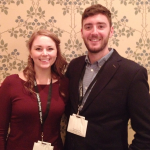 Summary by: Elizabeth Conrod (UWO) and Curtis Wetmore (Dal)
Summary by: Elizabeth Conrod (UWO) and Curtis Wetmore (Dal)
insert pic of Elizabeth and Curtis
Dr. Carol Bauer began her informative talk by stating her belief that if the treatment of tinnitus were as simple as taking a drug with no negative side effects or possibility of harm, 100% of people would take it. Tinnitus is a condition that all audiologists face in practice; therefore, determining effective evidence-based therapy is extremely important. During her talk, Dr. Bauer reviewed the available tinnitus treatments commonly seen in practice, such as sound therapy and counselling, and discussed the emotional response that people have to sound. When the cochlea detects a sound, there is a subcortical evaluation of the sound, a resulting emotional response to the sound, and finally a perception of a much more audible sound. The goal of therapy is to modify the emotional response to tinnitus. When assessing the efficacy of tinnitus therapies that currently exist, researchers are faced with a great challenge: There are so many therapies available, so how do we decide which two to compare? What if there have been modifications to certain therapies? Which outcome measure/questionnaires are appropriate to assess the treatment? How do we define success? Does the definition of success change how we view efficacy? Clearly, there is an inherent challenge in analyzing the efficacy of tinnitus treatment.
Tinnitus Retraining Therapy (TRT) is unique in that it uses sound therapy as well as directive counselling as a clinical management strategy. Dr. Bauer reviewed Jastreboff and Hazell’s work in developing TRT based on the habituation models of Hallam and Hinchcliffe as well as the neurophysiological model of tinnitus. She then explained her own work in the evaluation of TRT and its efficacy:
In one study, she compared TRT versus. minimal intervention for those with category 1 tinnitus: participants with bothersome tinnitus but no hearing loss. Here, the placebo group received sound therapy, which, over the course of the day, gradually turned off, while the intervention group had full maskers. Both groups received three hours of counselling intervention. Her results showed both groups displayed a drop in their perception of bothersome tinnitus. However, the intervention group showed more improvement than the placebo group on their Tinnitus Handicap Inventory (THI). Dr. Bauer attributed the placebo group’s improvement to the feelings they experienced when they had time with a compassionate, caring clinician. This study revealed the importance of counselling for tinnitus management.
Her second study examined a group of tinnitus patients with category 2 tinnitus: participants with bothersome tinnitus as well as hearing loss. Here, the intervention group receiving TRT had counselling and 8 hours/day of hearing aid use with a combination device (hearing aid and sound generator). The placebo group received standard hearing aids and standardized counselling. Once again, both groups showed significant improvements. The study is still in progress and final outcomes, including long-term benefits of the therapy, will be available in the spring of 2015.
Currently, questions remain outstanding: which is more important, amplification or counselling? Are these benefits maintained long-term? These are challenging questions to answer. Dr. Bauer is hopeful that these difficult questions will be addressed by an NIH-sponsored multi-centered, placebo-controlled study conducted by Dr. Craig Formby and Dr. Roberta Scherer, looking at these components to see where the most benefit lies. The end goal of this challenging work is to create a much-needed standard of care for those who suffer from tinnitus.
Dr. Bauer’s work to date, as well as the research she is pioneering, is helping to enhance the field of audiology. As audiology students and novice clinicians, we are constantly learning and attempting to refine our clinical skills. However, a lack of best-practice guidelines combined with a multifaceted approach to the management of tinnitus makes it difficult to know which route to take in the management of tinnitus. This talk shed insight on where research and evidence lies within tinnitus management, the challenges in researching tinnitus treatment strategies, and the efficacy of TRT. Dr. Bauer’s work is extremely clinically applicable; she is helping to improve TRT and to enhance our knowledge surrounding tinnitus management. Her research and subsequent recommendations will ultimately lead to better care and support for our patients in the future. We are excited to hear what conclusions are drawn from Dr. Bauer’s upcoming research, as they will undoubtedly strengthen our clinical practice.
The Hearing Loss Epidemic: Implications for Healthy Aging
Speaker: Dr. Paul Mick, Assistant Professor, Department of Surgery (Otolaryngology-Head & Neck Surgery) University of British Columbia, Kelowna, BC
Thursday, October 16, 2014 3:00-4:15 pm
![Maria Simone and Dario Coletta, UBC[1]](https://canadianaudiologist.ca/wp-content/uploads/2014/11/Maria-Simone-and-Dario-Coletta-UBC1-150x150.jpg)
Summarized by Maria Simone and Dario Coletta, School of Audiology and Speech Sciences, University of British Columbia
The objective of the presentation was (i) to provide an understanding of the causes and scope of the global increase in age-related hearing loss (ARHL) prevalence, (ii) outline research linking ARHL to negative social, cognitive and physical health outcomes, and (iii) offer implications for clinical practice, future research, and public health.
Populations across the world are becoming increasingly older due to reduced mortality and reduced birth rates. There is a corresponding epidemiological shift from communicable diseases to chronic non-communicable diseases and injuries. Geriatric illness is increasing rapidly. Older adults prone to frailty, multiple illnesses, altered responses to treatment, and geriatric syndromes such as falls and cognitive impairments. The aging population will strain healthcare resources and health expenditures are expected to grow exponentially.
The prevalence of ARHL is expected to increase as a result of trends in population aging and risk factors such as noise exposure and cardiovascular disease. While industrial noise exposure has decreased in developed countries, leisure noise may be increasing, particularly among young people. Animal models have shown that early noise exposure may accelerate the auditory aging process in comparison to noise exposure that occurs later in life, begging the question whether increased leisure noise exposure among young people will increase ARHL prevalence in the future. Individuals with a history of cardiovascular disease and those who are current smokers also have a higher predicted incidence of hearing loss, and rates of cardiovascular disease are on the rise. One study projected that by 2030 ARHL will be the 7th most burdensome chronic condition leading to disability in high-income countries.
Research has demonstrated associations between ARHL and a number of adverse health outcomes. Longitudinal studies have shown associations between hearing loss and incident dementia and cognitive declines over time among older adults. A prospective imaging study also showed significant reductions in overall brain volume among individuals with hearing loss compared to normal hearing subjects. Although these results show a correlation between hearing loss and cognitive decline, there is no proven causal relationship. The presence of unmeasured confounding factors or a common underlying cause, cannot be ruled out. In addition, the studies did not show that cognitive outcomes are better among individuals who use hearing aids. Nevertheless, it is possible that hearing loss might cause cognitive decline or dementia via mechanistic pathways that involve either social isolation and/or exhaustion of cognitive reserves.
Hearing loss has been associated with social isolation, low social support, loneliness and depression in qualitative and epidemiological studies. These psychosocial outcomes are linked to early mortality, cognitive impairment, depression and lower quality of life. Further research is needed to clarify whether factors such as age, sex, or severity of hearing loss influence associations between hearing and psychosocial outcomes.
Epidemiological research has also linked ARHL with falls and reduced mobility. One study showed that older individuals are three times more likely to experience a fall for every 25 dB of hearing loss, possibly because of reduced attention, cognitive reserve, environmental awareness, or unmeasured confounding factors such as co-occurring vestibular impairment.
Questions remain regarding the existence of a causal relation between hearing loss and poor health, as the mechanisms of association are not yet known. Future randomized controlled trials may help clarify causality issues. Future studies will also try to identify personal and environmental factors that may modify the risk of developing these conditions and assess implications for clinical practice.
Similar to the situation with hearing therapies, it is uncertain whether interventions aiming to improve physical strength, mental stimulation, vision, social interaction, nutrition and balance reduce the risk of various health outcomes such as dementia. They are still recommended, however, because they have other benefits and minimal adverse effects, and the same could be said for hearing aids or auditory rehabilitation.
Prevention of disease and promotion of healthy aging must be addressed in a holistic manner, taking into account the individual needs and goals of each patient. Multidimensional and multidisciplinary interventions that target various risk factors and take into account individuals’ values, health and social circumstances are needed. Hearing healthcare needs to be an integral part of such an approach. More awareness is needed among the public, healthcare professionals and policy makers of the importance of hearing and communication for older adults and how hearing health care contributes to the larger health context.
Outcome Measures: What Can they Tell Me that My Patient Can’t?
Speaker: Gabrielle (Gaby) Saunders, Oregon Health & Sciences University, Portland, OR
October 16, 2014 from 11:15-12:30
Summarized by Meghan Ley, UBC M.Sc. Audiology 2015
Objective: To share the necessity of measuring outcomes for every patient.
The Necessity of Outcome Measures
Dr. Gaby Saunders opened her 2014 Canadian Academy of Audiology conference presentation by sharing the World Health Organization’s International Classification of Functioning, Disability and Health (ICF). A theme throughout her presentation, Dr. Saunders highlighted that as audiologists we can measure outcomes across the ICF framework. Her talk focused upon how outcome measures can be used, different types of measures and their rationales, and considerations when selecting outcome measures.
For those unfamiliar with the ICF framework, it details the interaction between impairment, activity limitations, participation, environmental factors, personal factors and a health condition. With a focus upon the impact of a disease on an individual’s functioning, the ICF extends beyond a medical perspective. As clinicians it is important to understand that contextual factors may also be important in an individual’s ability to function.
Dr. Saunders described levels of outcomes using the ICF model. She began with 3 portions of the ICF: impairment, activity limitations and participation and described how they are all aspects of outcome that can be assessed. After covering how to measure each of the aforementioned domains, Dr. Saunders progressed to a construct not typically assessed by audiologists: quality of life. A concept much more indefinite and harder to measure, quality of life is a reflection of an individual’s overall sense of wellbeing. She suggested that a client does not seek out intervention for a specific situation but rather for an improvement in their health-related quality of life.
The use of an intervention and the client’s satisfaction with an intervention are not specifically constructs within the International Classification of Functioning framework but are important to consider. That is, an individual cannot have good outcome with an intervention unless they use it to some extent. However frequent use may reflect need and not necessarily satisfaction with a service or product. Satisfaction is also influenced by many factors, including the individual’s relationship with their provider. Specifically, research has suggested that a client will report greater satisfaction with primary care providers when they feel better engaged and that the relationship is one of respect.
Focusing upon the tools to measure outcomes, there are a near endless number available. In order to determine what outcome measures to use, it is important to first decide what it is you want to measure. Dr. Saunders highlighted a few measures and some things to consider when selecting them. The Expected Consequences of Hearing Aid Ownership (ECHO) and the Satisfaction with Amplification in Daily Life questionnaire (SADL) are complementary questionnaires. Using these outcome assessments in a clinical setting, you can compare hearing aid expectations with actual hearing aid outcomes. If you are interested in knowing what the patient wants from their hearing aids, the Glasgow Hearing Aid Benefit Profile (GHABP) and the Client Oriented Scale of Improvement (COSI) are two questionnaires reflecting a client’s needs and limitations in situations of their choosing. The International Outcome Inventory for Hearing Aids (IOI-HA), which has a research focus, and the Psychosocial Impact of Assistive Devices Scale (PIADS) which measures quality of life, were also discussed. The PIADS is a Canadian developed measure that assesses competence, adaptability and perceived impact on self-esteem. This 26-item questionnaire is not specific to hearing aid outcome and can be applied to the use of any assistive device.
To conclude her presentation, Dr. Saunders provided examples of the value of outcome measures. Referencing her 2012 research paper with Dr. Anna Forsline, “Hearing-aid counseling: Comparison of single-session informational counseling with single-session performance-perceptual counseling”, Dr. Saunders showed how a single session of hearing aid counseling that included a review of a client’s test results could influence their satisfaction with their hearing aids. Long term hearing aid users were provided with a graphical representation of their speech reception threshold in noise in aided and unaided conditions. Their results were then compared with age-specific norms and whether or not they were getting benefit from their hearing aids was discussed. Eight weeks after the counseling session, participants returned and over 50% had altered perceptions about their hearing ability. Participants had a better understanding of their hearing limitations and could share this information with family to help them better understand the impacts of hearing loss. When participants could see from the graph the aided benefit in noise they were receiving from using their hearing aids, they were convinced the aids were helping them. She has also found that the act of filling out questionnaires can result in participants reflecting more upon their personal difficulties and have greater acceptance of the need to wear hearing aids.
As clinicians we can learn so much by performing outcome measures. We are able to gather information to make informed decisions in our practice and provide proof of effectiveness. Using outcome measures reflects clinical expertise and a desire for improvement. Dr. Saunders spoke not on the value of measuring outcomes for every client, but on the need. Consider your next client and how you can better serve them – what outcome measures will you use?

